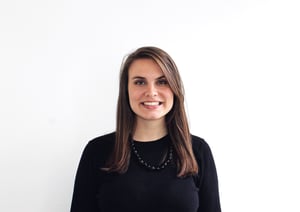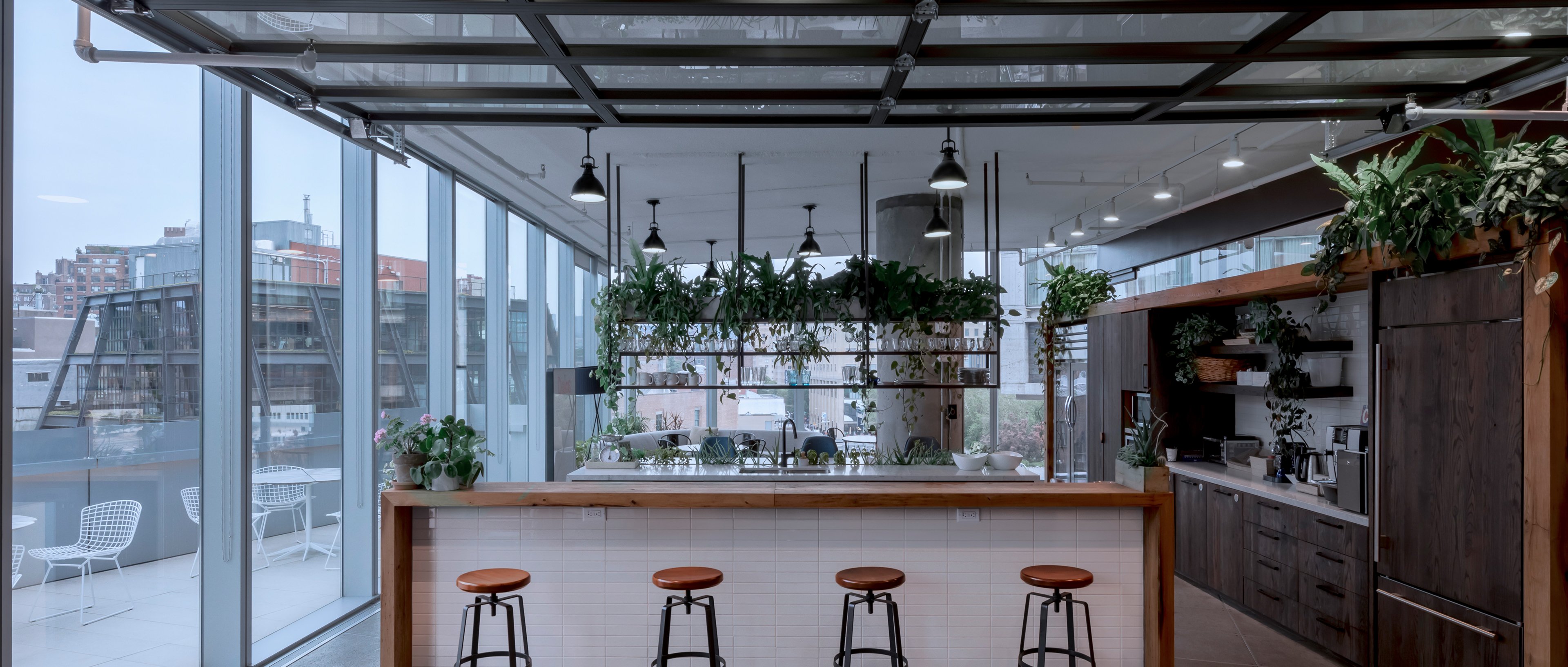
Ketra sat down with Caitlin Toczko (pictured to the left), Senior Lighting Designer at Atelier Ten and project lead for the WELL-Certified Delos New York HQ project, to talk about her experience in the lighting industry. Caitlin shared keen observations about the industry's ongoing transformation and what inspires her to continue creating experiences with her craft.
1. Describe your path to becoming a lighting designer.
While earning my Bachelor’s degree in architecture, I learned how light can really create a mood or a feeling in a space. I was studying at Rensselaer Polytechnic Institute - where they have a fantastic lighting program - so I took a lighting design elective and absolutely loved it. From there, I pursued a masters from the Lighting Research Center and have been working in the field for over 5 years.
2. What are some of the biggest changes in the lighting design field you have seen since starting your career?
The first change I saw was the rapid shift to LEDs. At the beginning of my career, LEDs were only being used for special conditions or certain luminaires. Soon, we began specifying our projects to have all LEDs.
More recently, fixtures are getting smaller and more efficient, and electrical codes are getting more stringent. The most obvious trend is the ability to tune the color temperature of light within the luminaire. This shift has influenced how people think about lighting and what it can do. It’s the big thing that’s drawing attention to lighting from people outside the field. The most exciting for me, is that there is a broader community interest in how light affects health. Designers and researchers know the non-visual effects of lighting, and now manufacturers are taking note too.
I aim to create joy with light, always remaining conscious of what light can do to create a mood or a feeling."
3. How would you describe your role at Atelier Ten?
As a Senior Lighting Designer, I manage a broad range of project types from one-room retrofits to large 500-thousand square foot projects -- mostly university buildings and community spaces, but also commercial offices, landscapes, and healthcare facilities.
I work closely with the lighting team here at A10 to seek a better understanding about light and health within the broader lighting community, and I’m responsible for meeting the lighting features on projects targeting WELL certification.
Through my work, I aim to create joy with light, always remaining conscious of what light can do to create a mood or a feeling.
4. What do you enjoy most about your job?
Lighting design is a really nice mix of technology and visual aesthetics. Now, as people are becoming more focused on light and wellness, the work gives my team an opportunity to balance the design and technical requirements with human comfort.
5. Do you have a favorite project you've worked on?
I enjoy working on complex projects, such as the Delos headquarters office in New York. Usually, my team and I work through the architect to understand a client’s needs. On the Delos project, my team and I at Atelier Ten were able to work directly with the Delos team to get their input on the lighting design firsthand. The opportunity to speak with the actual occupants of the space was a great way to make sure we understood exactly what Delos wanted for their space and how we could adapt the lighting design to suit.

TEST test test lorem Dustin Yellin's three-dimensional paintings
6. How has the WELL Building Standard impacted your work?
Many of the design suggestions of the WELL Standard are not unfamiliar to lighting designers, but the rigor behind the technical metrics and formal documentation required for certification has impacted our process. There is a more intensive calculation period during the design process that must be done in order to secure points toward specific features for the WELL Standard. This also means that we have to keep an especially close eye on EML threshold on projects striving to meet WELL's circadian lighting requirements.
7. How do you measure "effective light"?
When my team and I think about effective light we consult our group's best practices for pleasant light quality, we ask what the programmatic needs are for the space, and [we] think about technical aspects such as light levels for tasks and balanced contrast. Overall, we consider optimal light quality for the human experience.
8. Who do you admire in the field of lighting design?
One designer is Leni Schwendinger. She designs urban exterior lightscapes. She is not afraid of color, and works with it well, always making bold choices with a beautiful result in the end.
Another designer is Jan Moyer, my boss at my first lighting job. Jan also works mainly on exterior lighting but focuses instead on landscapes, lighting trees and plants to create calm and serene landscapes.
9. What do you wish everyone understood about lighting?
My favorite thing about lighting is also, I think, one of the most overlooked things about lighting from people outside the field, and that is how important it is in subtly setting a tone. It can create the first impression, either good or bad, of a space or an object. If the lighting design is done spectacularly well, it can take a moment to realize the role light plays in creating an atmosphere.
10. What is your favorite lighting art installation or lighting artist?
My favorite installation is one I visited when I first became interested in light; it was a temporary installation called Blindfield at RPI’s (Rensselaer Polytechnic Institute) black box theater. The installation was a series of lighted translucent panels with varied levels of opacity hanging at different heights. These panels were the only source of light in an otherwise blacked-out room and was part of a broader multimedia experience. The installation was designed and installed by the RPI School of Architecture in 2011. You can see a bit of what I enjoyed: here and here.
Editor's update: Caitlin Toczko joined Lightcraft, a division of AKF Group as Senior Lighting Designer in December 2019.
24/7 Technical Support:
1-844-LUTRON1 (588-7661)
lightingsupport@lutron.com
Customer Service:
Monday-Friday 8am- 5pm EST
1-844-LUTRON1 (588-7661)
The Ketra logo, Ketra, TruBeam, Color Lock, and Calibration360 are trademarks or registered trademarks of Lutron Electronics Co., Inc. in the US and/or other countries.
©2025 Lutron Electronics Co., Inc. All rights reserved.
Get inspired with all the best from Lutron and Ketra: exclusive news, project features, and more.